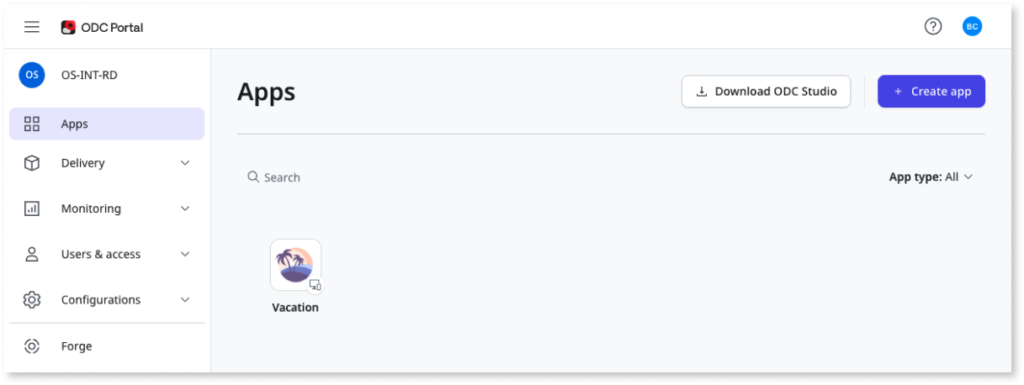Governance and CI/CD on ODC Platform: A New Era in Low-Code Development
As we all know, OutSystems is a leading low-code development platform and has transformed how organizations build and deploy applications. Recently OutSystems has introduced the shiny and new ODC a.k.a OutSystems Development Cloud, In this article we will delve governance and Continuous Integration/Continuous Deployment (CI/CD) and how it has been elevated to new heights, offering enhanced capabilities and a one window interface compared to its predecessor, OutSystems 11.
What’s New in ODC Governance?
ODC introduces a more robust and centralized governance model via the ODC Portal, enabling organizations to maintain oversight and consistency across their application portfolios.

Let’s look at some Key enhancements incorporated on the new ODC Web Portal:
- Centralized Configuration Management: ODC allows for centralized management of environment configurations, application dependencies, and security settings. This simplifies the administration of complex projects and ensures consistency across the board.
- Enhanced Role-Based Access Control (RBAC): With ODC, organizations can define granular permissions for different user roles using the organizational role framework. This ensures that only authorized users can access applications and resources within the ODC portal. The roles are managed under the “Manage” menu in the portal.
- Improved Compliance and Auditing: ODC enhances auditing capabilities by tracking changes, deployments, application logs, and user activities. These features simplify regulatory compliance and maintain a thorough audit trail. Notably, ODC has also achieved SOC2 attestation, underscoring its commitment to security and compliance.
Improved IN CI/CD WITH ODC
The concept of CI/CD, like Agile and DevOps, evolved as a solution to pressing business demands for innovation, new features, and seamless user experiences. At the same time, it enables developers to work rapidly with the stability and reliability of their applications. However, many of the old features like the visual nature of the pipeline remain the same except that it’s now under the ODC portal instead of it being under the Service Center or lifetime in Outsystems 11.
Let’s look at the advancements in ODC
- Streamlined: ODC simplifies CI/CD pipeline creation and management through its intuitive, single-portal interface, the ODC Portal. This replaces the Lifetime applications used in OutSystems 11, providing a unified experience. The current implementation’s graphical screen, displaying a list of all applications, their versions, and environments/stages within the pipeline, enhances visualization and usability for both technical and non-technical users.
- Improved Feedback Loops: ODC provides better visibility into the CI/CD process, with real-time feedback on build and deployment status. This allows teams to quickly identify and address issues, reducing the time it takes to resolve problems and get new features into production.
- The ODC Portal: It is a centralized web interface for managing and monitoring your OutSystems Development Cloud applications. It acts as a unified console where developers, administrators, and other stakeholders can access, manage, and gain insights into their entire application portfolio built on the ODC platform. The Delivery section is used to deploy apps, view apps deployed to a specific stage, and their delivery status.
What are the impact of Improvements in CI/CD
Many of the CI/CD advancements in ODC translate into several tangible benefits for organizations and its teams:
- Faster Time to Market: Automation and streamlining of deployment enable organizations to release new features and updates more frequently.
- Improved Quality and Reliability: Enhanced testing capabilities and better feedback loops help ensure that applications are thoroughly tested and meet quality standards, reducing the likelihood of production issues.
- Increased Efficiency: Automation and integration with existing tools streamline the development process, freeing up developers to focus on innovation and value creation.
Conclution
In conclusion, OutSystems ODC’s advancements in CI/CD, coupled with its enhanced governance model, marks an new era in low-code development. By leveraging these capabilities and adopting best practices, organizations can achieve faster, more reliable application delivery. ODC’s focus on streamlined processes, enhanced control, and risk mitigation ensures that applications are not only developed quickly but also maintained in a secure, compliant, and risk-aware manner, fostering trust and confidence in the solutions developed on the ODC Platform.




